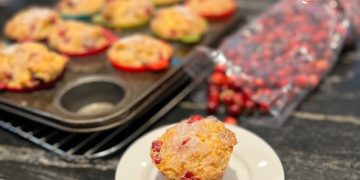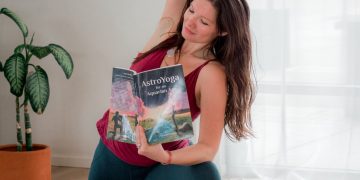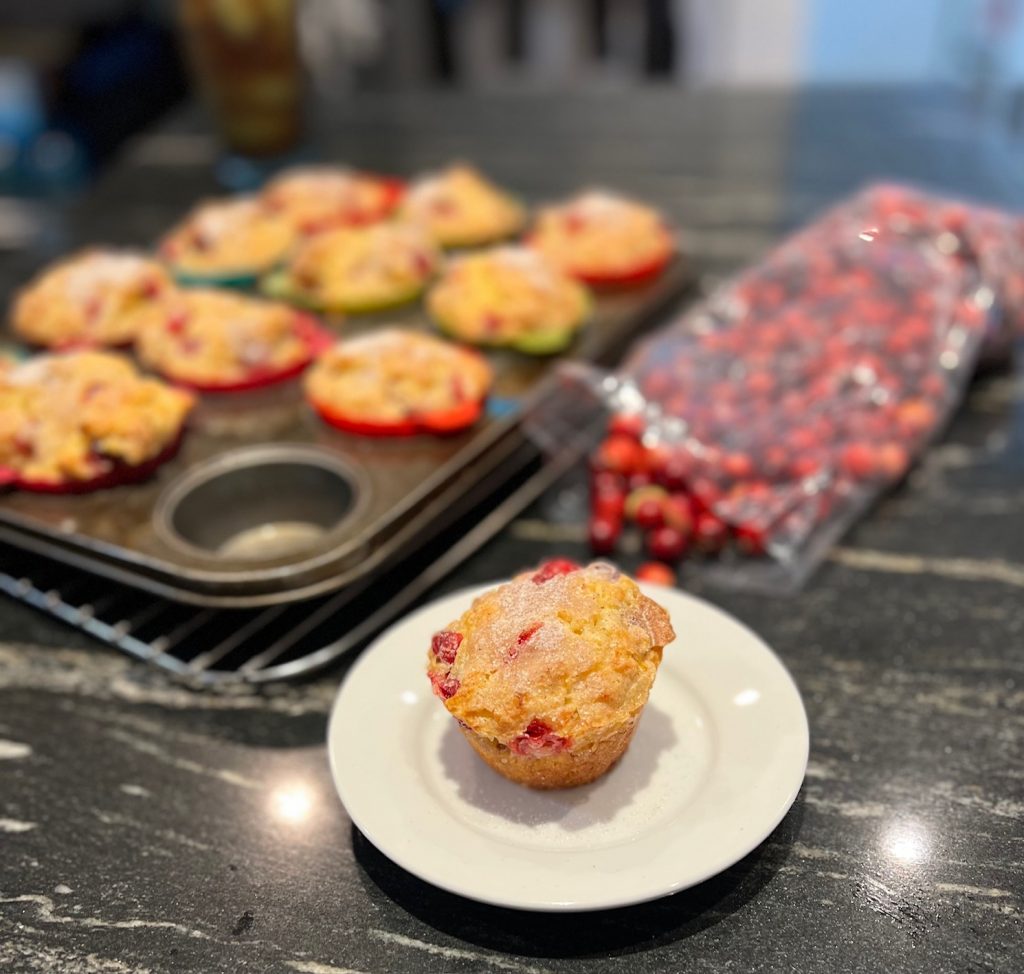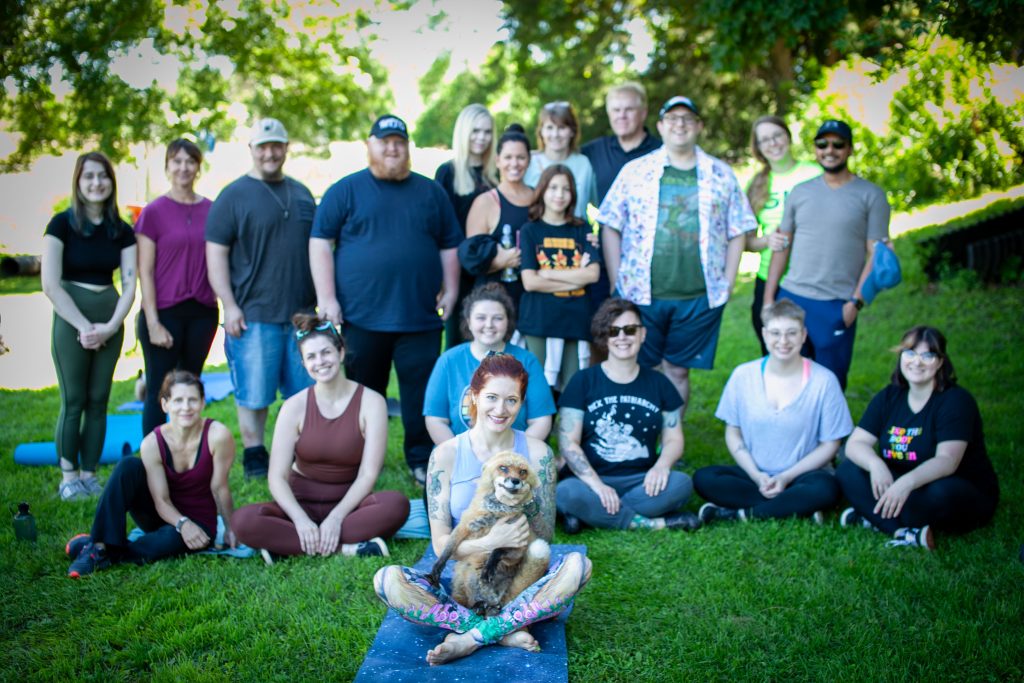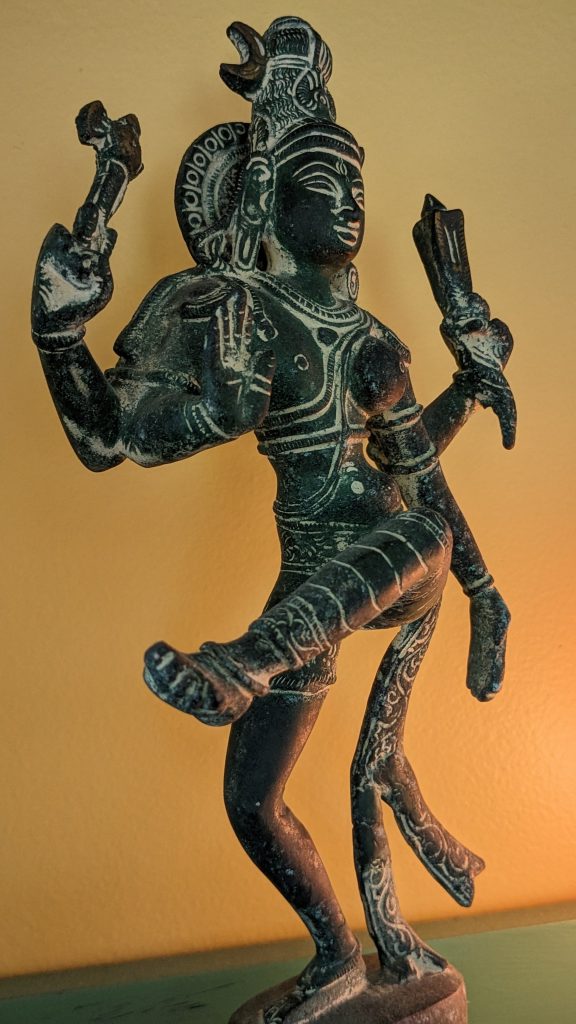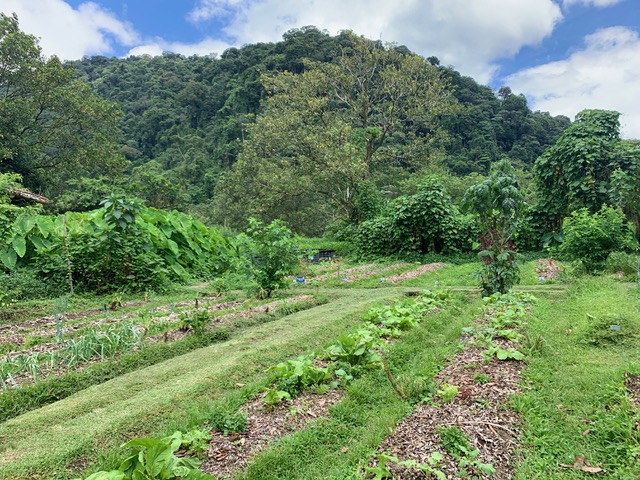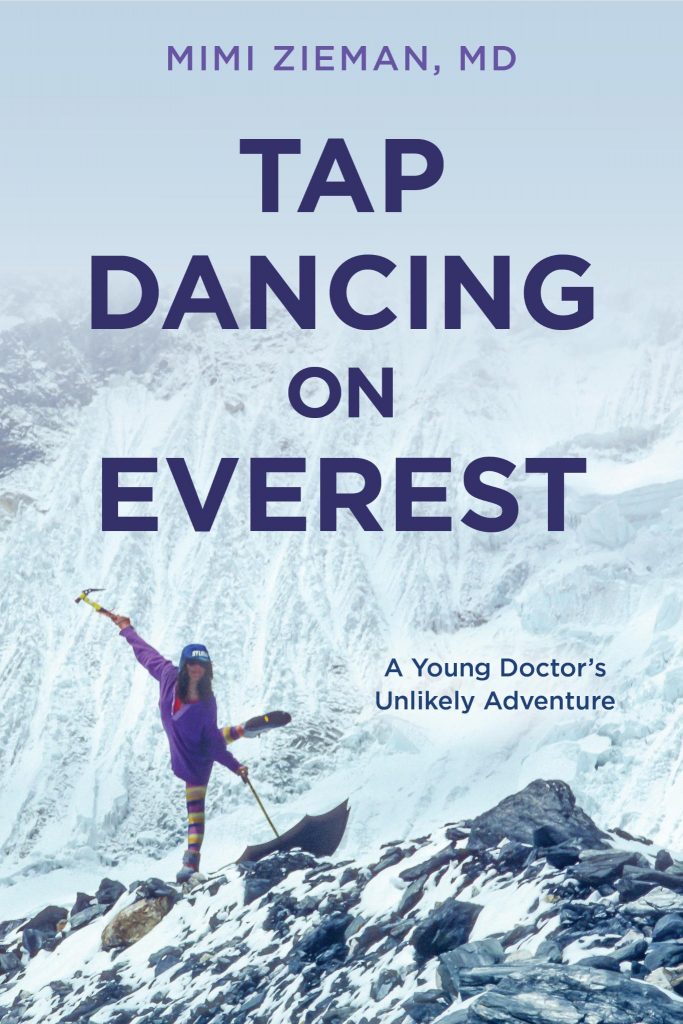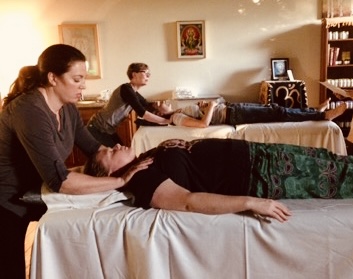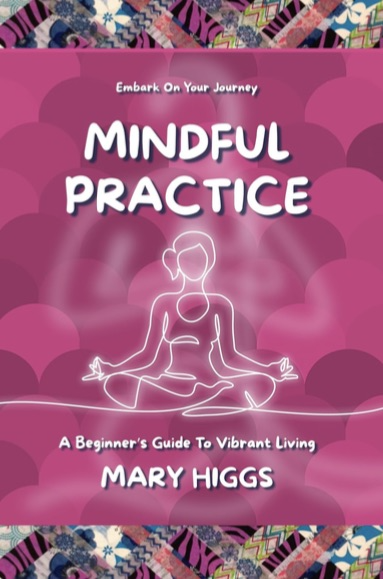It started with my co-worker Sera. December deadlines smashed into holiday expectations, life a mash-up of thin Minnesota nice on the outside and messy mess on the inside. Snow slush both ways in work traffic, slacks over long underwear over nylons to keep warm in joyless custard-colored cubicles. Twenty-three years ago, Sera stopped by my workstation with a Bell jar in her hand. Then, my life changed.
Bright orange behind glass, lid capped in checked gingham. She wished me Happy Holidays and gave me the jar, index card attached with a curled red ribbon. “This is my family’s favorite Turkish recipe,” she told me, her dimpled smile bringing me out of my email fog. “It’s so easy,” she said. “It’ll warm and soothe you.”
She didn’t ask me to try it, to report back. She just turned her sunshine-self back into the fluorescent hallway, back to 47,000 tests (yes, 47,000) she’d written to make or break the software we worked on together with our team.
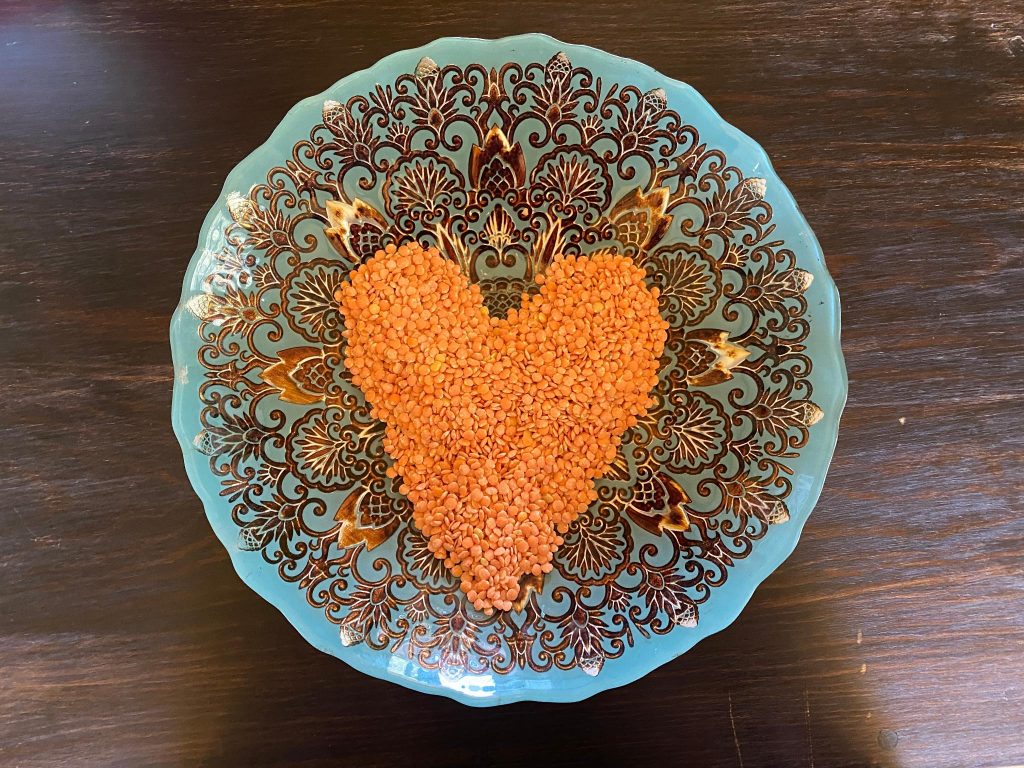
I looked closer. Lentils. Lentil soup recipe. As a vegetarian, I should have danced in my 5×7 space. But I didn’t like lentils, not at all. Love and respect for Sera outweighed my lentil-aversion. Within two weeks, I made the recipe. I fell in love with red lentils.
I’ve cooked this soup hundreds of times. Wintertime warmth, summertime simplicity, under-the-weather comfort, and especially when I felt too tired to forage in the fridge for food. At some point, I let go of the recipe and made it from experience and from my heart. I modified it to different dietary needs of my diners. I made extra batches to give away when I couldn’t find words.
Sera didn’t just share her family recipe with me, she shared the soul of the soup, adding me to this generational lineage. The tree of Turkish Mercimek now had my branch rooted up through the trunk, sharing the recipe and soup as often as I could. Soup still connects me to Sera, her family, generations before her, and now to the people I’ve fed into this culinary forest. We bring ourselves to a communal cooking forest. When we pay true attention, we’re no longer sitting separately under shade or sunshine, we are alive and connected.
Food is food. But it is also energy. Not just energy according to nutritional charts on the sides of packages, but energy we radiate as we cook, as we plate, as we bring silverware towards our faces. How do you deepen a recipe and turn food into nourishment for body and soul? How do you do that if what cooking time you have is also time you use to think about how much ingredients cost, will they eat it, why did I say that today, did I forget to text back, are the stains on their clothes obvious or can I wear them again? Even, who am I, like really?
My experiences and teachings from Himalayan cooking classes I took truly taught me how to make food. My teachers taught me to attend to food as I prepped and cooked. “Attend” means being in the moment, focusing on food with whatever calm one finds. To calm further, I shoosh my mind by breathing deeply through my nostrils from my belly. Let go of what just happened or what might happen next. If I cut onions, all I do is cut onions. If I sort rocks out of dry rice, I feel rice with my skin, making sure nothing would crack my teachers’ teeth. I don’t have to be happy or perfect, I only mind the food and mind my mind. I learned to chop, stir, and serve with compassion. I didn’t realize the power of this prep until I ate at restaurants where cooks argued, words and energy spilling into food and people. It took me many meals before I connected the people prepping food to how I felt when I ate it.
After decades of cooking, lessons, and eating, I know WE are the main ingredient. How you feel and what you think while you prepare food affects body, mind, heart, soul. Yet, no pressure! If you go in many directions when cooking (which includes pulling pre-prepped food together), just breathe and refocus when you remember. Working on this article, I realized I always did my best when cooking for others. I was blind about making food for and caring for myself. I thank Sera for opening my heart to this healing soup. I thank this writing process for showing me I am just as important as any person I feed. Energy is energy. Open your mind and heart to the many levels. Infuse love as you feed yourself and others, even if the phone chirps while you’re stirring the pot.
Mercimek
Turkish Creamy Lentil Soup
Yield: 3-4 servings
Realistic Prep and Cook Time: 55 minutes (includes home interruptions)
1 cup dry red lentils
1 cup chopped onion
6 cups vegetable broth
3 tablespoons ghee*, butter, or cooking oil
Salt** to taste
1 large soup pot
- Rinse lentils until water runs clear. Drain and set aside.
- Add ghee, butter, or cooking oil to soup pot. Sauté onions over medium heat, adding salt to taste.
- Once onions are soft, brown, or caramelized, add broth and lentils.
- Bring to a slow boil, then turn heat down to a gentle simmer.
- Cover pot with lid slightly open and simmer for 20 minutes.
- Puree soup in pot with immersion blender or transfer to blender, then reheat in pot.
- Serve hot soup in bowl or mug.
Serve as/with:
- Appetizer or side soup: Pair with your meal of choice. Consider other Turkish or Persian recipes. Or, make a substantial salad with ingredients on hand.
- Main dish: Serve larger portions with crackers or bread, salads, and/or spreads of choice. I pair soup with almond or gluten-free crackers, Turkish or challah bread, mixed olive bowl with chunks of feta, fig spread, and/or large and variety-veggie-heavy salad.
Dietary Variations:
- Kosher: check labels and adjust cooking fats.
- Low Glycemic Index (GI): Use ghee, or cooking oil with Low GI. Do not use butter.
- Low Sodium: If using packaged or bouillon broth, find a low sodium version. Control salt to your level in homemade broth. Reduce or eliminate salt to taste.
- Gluten-Free; Wheat-Free; Soy-Free; Nut-Free; Vegan: check ingredients of packaged or bouillon broth.
Cooking Variations:
- Thicker soup with roux: in a separate small fry pan, low heat 2 tablespoons of ghee, butter, or cooking oil. Add slowly and whisk in 2 tablespoons of all-purpose flour, regular or gluten-free. Whisk for 2 minutes or until flour mix turns a light golden brown. Gradually whisk this roux mixture into cooked onions before adding broth and lentils. Stir soup to prevent lumps of roux.
- Thicker soup with veggies: add 1 medium carrot and/or 1 medium potato of choice, finely-chopped, to broth before boiling. High altitude cooking: parboil medium chunks of vegetables in separate pot of water, then add to soup before boiling.
- Textured soup: Blend none or half of the soup, or any proportion you choose, keeping the remainder of the soup chunky.
- Make a double batch for larger meals, to freeze for later, or to share with someone who loves your care.
Ingredients:
*Ghee: regular butter melted to separate out liquid fats from milk solids. Milk solids are removed, less lactose but not dairy-free. Co-ops and most grocery stores sell ghee.
**Salt: Use what you have on hand. I use kosher salt, sea salt, or the regional salts I collect from places I travel. Salt in this case is used as a flavor enhancer and not meant to end in a salty result. If using packaged or bouillon broth, check sodium content and adjust this extra salt accordingly.
Deeper:
- YOU are the main ingredient. As much as you can, create your meals with deep, even breathing and focus your attention on the process with love, as slowly as you can.
- Even if you’re interrupted or find your mind wandering during the process, just bring your focus back to now and cooking. Reality is both distraction and moments of focus.
- Love and compassion while cutting and stirring add your healing energy to the food.
Variations for: Vegan; Vegetarian; Kosher; Low Glycemic Index (GI); Low Sodium; Gluten-Free; Wheat-Free; Dairy-Free; Soy-Free; Nut-Free; Egg-Free; Coconut-Free
(Level: Easy. Make Ahead or Fresh; Refrigerate up to 2 days or Freeze)
Michelle Skally Doilney is a Yoga Alliance-certified teacher since 2003, practicing Himalayan Yoga since 1997, and a Feng Shui consultant in the BTB tradition since 2005. A full-on writer, teacher, photographer, and adventure traveler, her home base is Minnesota when not on walkabout. Michelle is focused and passionate about helping others find their individual and community voices and selves. Combining her corporate career, body/mind certifications, and personal experiences, she offers online and in-person classes, workshops, and consultations on writing practice, Feng Shui, travel, and life.


